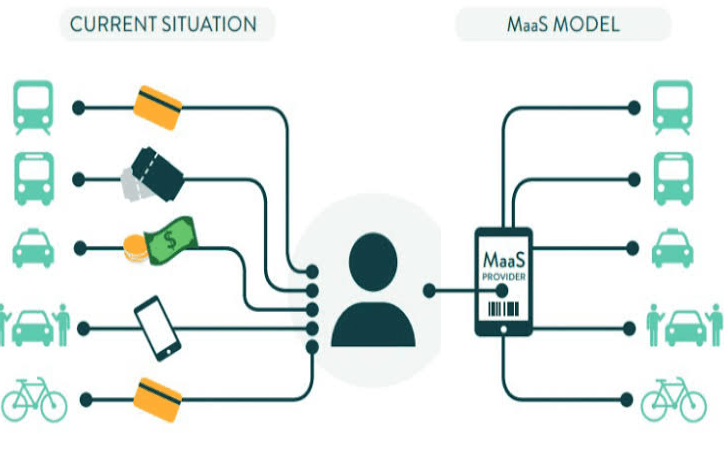In the dynamic realm of urban mobility, Mobility as a Service (MaaS) has emerged as a transformative force, reshaping the way people navigate cities. A successful MaaS platform goes beyond mere convenience; it intertwines seamlessly with the fabric of diverse transportation services, prioritizes user experience, and adapts to the unique needs of each locality. Let’s delve into the key ingredients that define and elevate a MaaS platform to new heights.

1. Account-Based Ticketing (ABT): The Foundation of MaaS
Account-Based Ticketing (ABT) is, without a doubt, the necessary ticketing method in order to do MaaS: there can be no MaaS without ABT. Indeed, the ABT represents the foundation of MaaS, being the only solution capable of guaranteeing scalability, versatility, accessibility and interoperability between transport services and the MaaS ecosystem. These are all words that – not surprisingly – rhyme with mobility. According to ISO/TR 20526:2017,
- The ABT is a ticketing method where the proof of the right to travel and all the travel records are contained in the back office and not in the physical media (“media”) held by the passenger.
- The intelligence and security of the ticketing system are concentrated in the central system rather than in the media and related readers.
- The ABT can work both online and offline (often referred to as “degraded mode”) using risk-managed revenue protection techniques.
2. Bluetooth Validation: Enhancing User Experience
In the pursuit of a seamless User Experience (UX), Bluetooth validation, an expression of ABT ticketing, takes center stage. Whether through on-board control unit modifications or the deployment of beacons, Bluetooth validation expedites access to vehicles. The distinction between Check-in and Be-in adds a layer of automation, transforming the dynamics for both users and transport operators.
3. Adaptive MaaS: Tailoring Mobility Solutions to Local Needs
MaaS is not a one-size-fits-all concept. It thrives on adaptability, exemplified by projects ranging from the futuristic “corporate projects” in Dubai to the MaaS initiative in Delhi, India. Our experience underscores the importance of conducting thorough needs analyses, acknowledging the specificity of each territory, and embracing real intermodality.
4. Demand-Responsive Transport (DRT): The Versatile Feeder of MaaS
What is the relationship between DRT and MaaS? In the US, MaaS is de facto synonymous with MoD (Mobility on-Demand) and, in fact, the very definition of MaaS by the MaaS Alliance speaks of “accessible on-demand mobility service”. The DRT (Demand-Responsive Transport), is perfect as feeder of the transport network and is particularly suitable as a first and last-mile service, in geographical areas with low demand and during non-busy times of the day; it has an impact on all users and in particular on tourists and the disabled. With various DRT service typologies, from point-to-point to pooling, MaaS platforms gain flexibility and efficiency. However, a well-done DRT should begin with MaaS, avoiding silo solutions and ensuring interoperability.
Various Demand-Responsive Transport (DRT) services offer diverse implementation options:
Point-to-Point Scenario: Utilizes existing local public transport stops, optimizing collection points for efficiency.
Door-to-Door Scenario: Prioritizes rider flexibility, allowing pickups and drop-offs at locations of choice for personalized service.
Pooling with Route Planning Algorithms: Implements pooling strategies using modern route planning algorithms to share journeys or specific legs, maximizing vehicle occupancy for efficiency.
Variable Vehicle Capacity: Adapts to different needs with options like 9-seater mini buses for urban routes and standard-sized buses for tourist-heavy destinations.
Recognizing these variables is crucial for tailoring DRT services to evolving demand, ensuring a responsive and effective system.
5. Inclusion: Making MaaS Accessible to All
MaaS should not be exclusive to the digitally savvy. Inclusive strategies involve addressing the needs of disabled individuals, the elderly, the “unbanked,” and those less familiar with technology. From technological accessibility to quality services and customer support, our commitment is to make MaaS a reality for everyone.
6. MaaS Architecture: Evolving for Sustainable Mobility
The evolution of MaaS architecture is an ongoing necessity. Identifying the roles of MaaS Operator and MaaS Integrator is crucial for effective governance, choice for ridership, and healthy competition among technology providers. Embracing hardware-agnostic approaches ensures continual service, incremental updates, and compatibility with the ever-changing world, placing software at the forefront.
In conclusion, a successful MaaS platform is not just a technological marvel; it’s a comprehensive solution that considers local nuances, user diversity, and the ever-evolving landscape of urban mobility.
Source: Openmove
